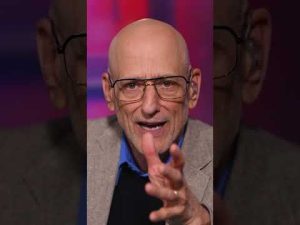As the political landscape continues to shift, President Trump’s economic policies have sparked conversation, debate, and, unsurprisingly, a bit of drama. Among the many debates swirling around the economic stage, one recurring theme seems to dominate: whether Trump’s approach to tariffs and manufacturing jobs is causing harm or fostering growth. With Democrats ringing alarm bells over market fluctuations as if they were announcing the end of days, it’s refreshing to observe how things have really played out. Despite the cacophony of dire predictions, it appears that reality has resisted matching the sky-is-falling narrative.
Congressman Gil from Texas, speaking on the conservative viewpoint, notes the Democrats’ penchant for fear mongering. This rhetoric initially seemed effective when market jitters led to brief declines, yet those prophetic headlines predicting endless doom were proven premature. Now, as we glance at the latest jobs report, it seems the fears were largely unfounded. President Trump’s approach to tariffs, reminiscent of a poker player who knows when to hold ’em and when to fold ’em, highlights the long-term perspective he championed. Rather than hitting the panic button, he encouraged the nation to stay the course. It seems his faith in this strategy is paying off, with jobs and manufacturing returning stateside.
However, there’s an alternate chorus, insisting that tariffs are placing a burden on the everyday American. Critics paint a picture of rising costs for essentials and bleak retirement accounts. Yet, as Congressman Gil points out, who’s really benefiting? It’s likely not the doomsayers but the very citizens who now see job opportunities growing on American soil. A strong economy isn’t just about stocks; it’s about tangible jobs that provide real benefits. Relying on foreign nations for everyday items is risky, and ensuring domestic production aligns more with national security interests.
Another development stirring the pot is President Trump’s ambitious budget request for 2026. While proposing to cut nondefense spending, this budget allocates significant funding for defense and homeland security. Critics argue that spending still isn’t being slashed enough. With a national debt spiraling into trillions, every cut counts. Yet, Congressman Gil sees the positive strides being made, particularly as domestic spending is decoupled from national defense, a maneuver that could reshape negotiation dynamics in Congress.
Amidst these economic shifts, one controversial proposal involves defunding NPR and PBS, portrayed by some conservatives as little more than left-wing propaganda outlets. While this move may provoke debate, Congressman Gil argues that tax dollars shouldn’t bankroll any media with a clear bias. It’s a stance that’s sure to ruffle feathers but reflects a desire to scrutinize where government money flows.
In this arena of claims and counterclaims, President Trump’s economic strategies underscore a willingness to forge new paths, however bumpy. While the road hasn’t been without its potholes, there seems to be more traffic headed toward a promising destination: a revitalized American workforce. As always, the key will be in balancing short-term challenges with long-term gains. One could only hope that amidst the political theater, everyone manages to keep their eyes on the bigger picture.







